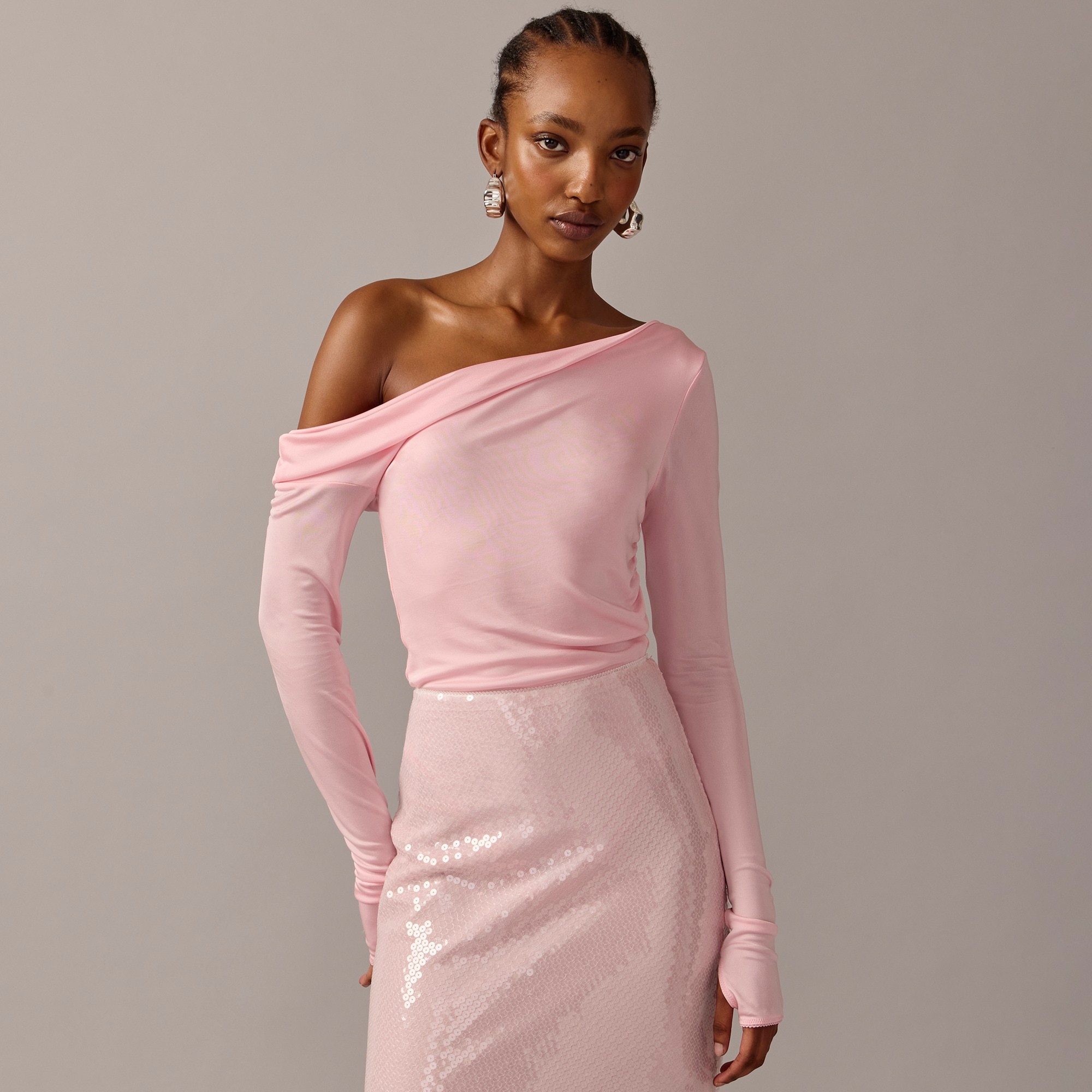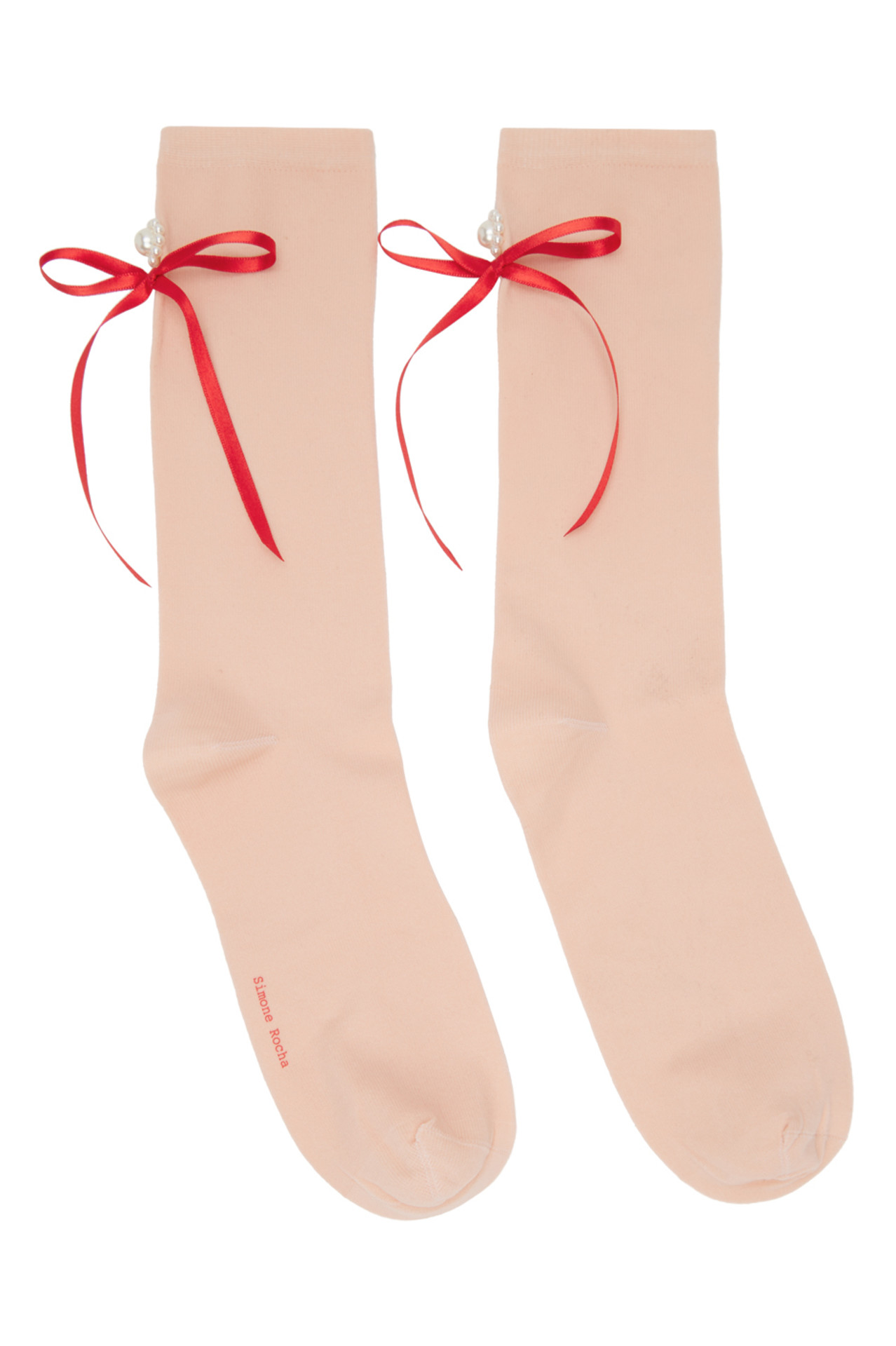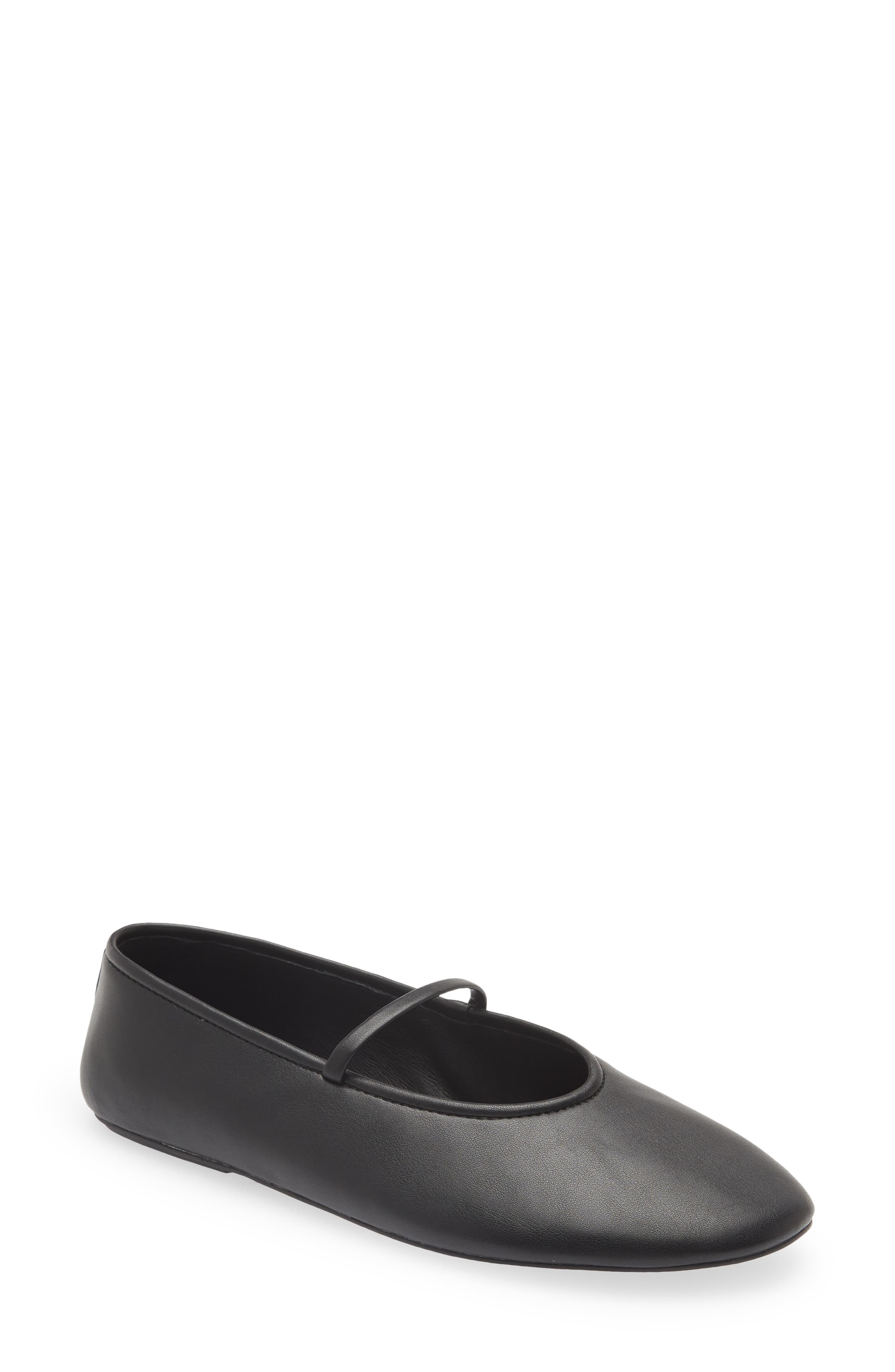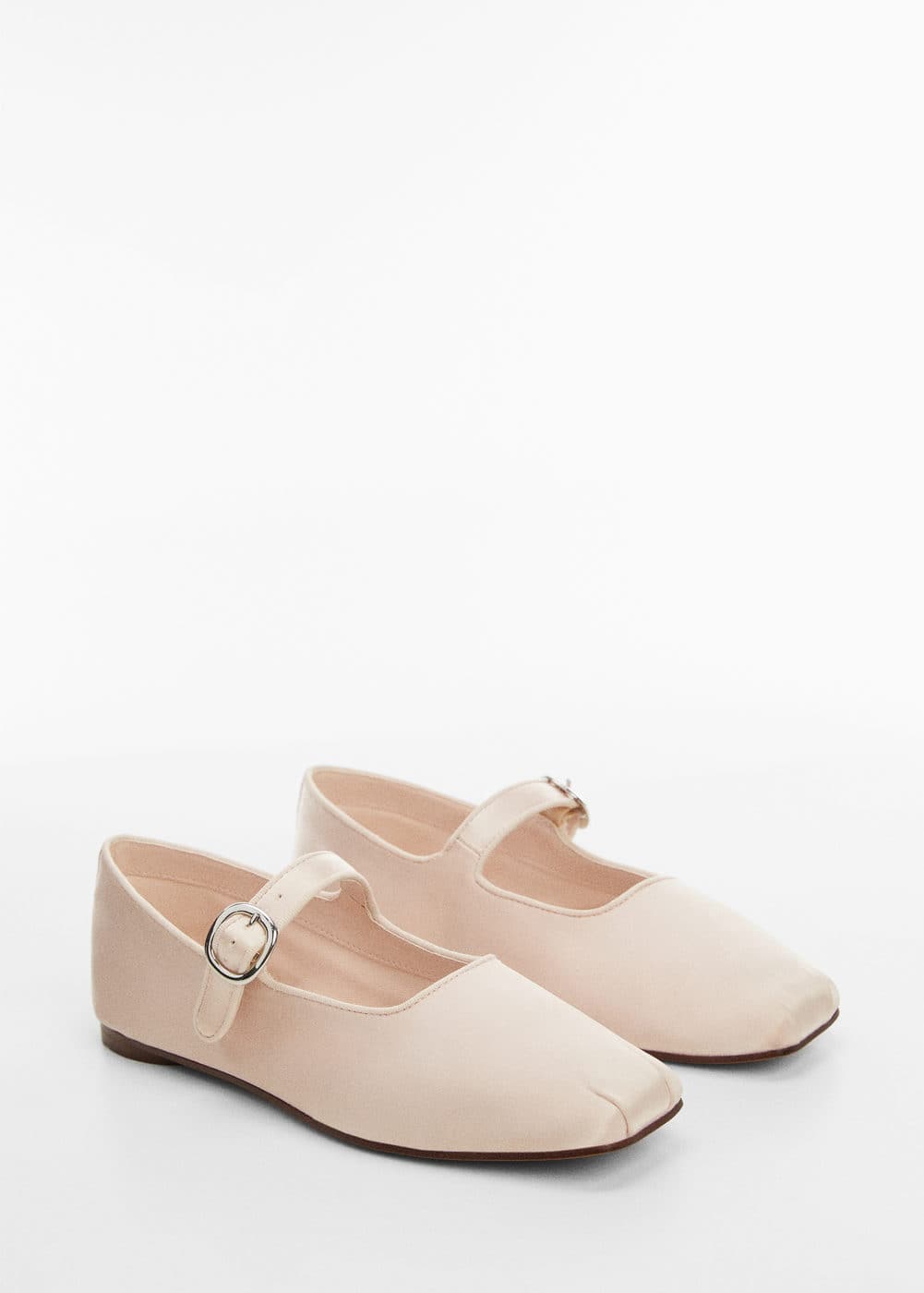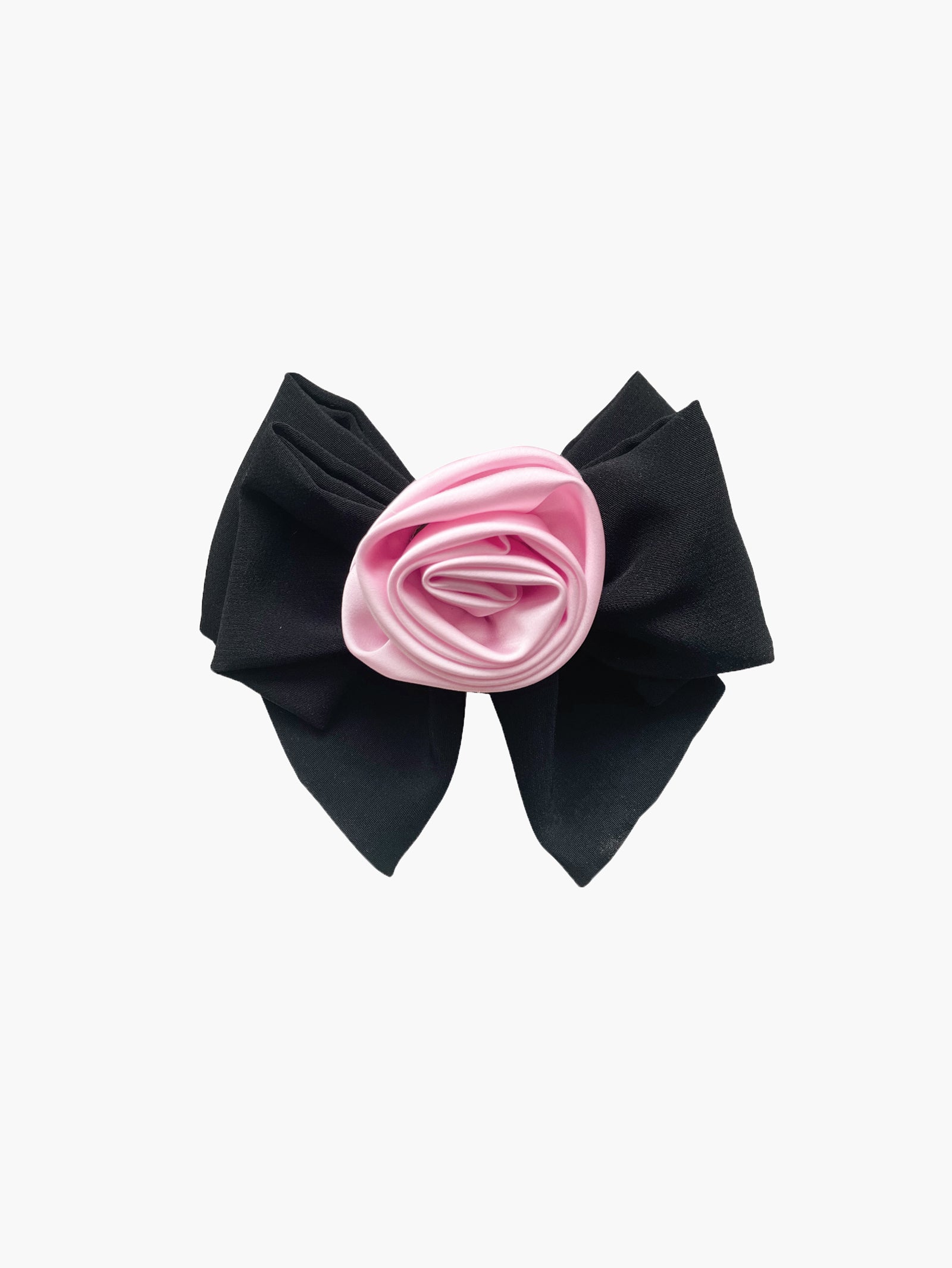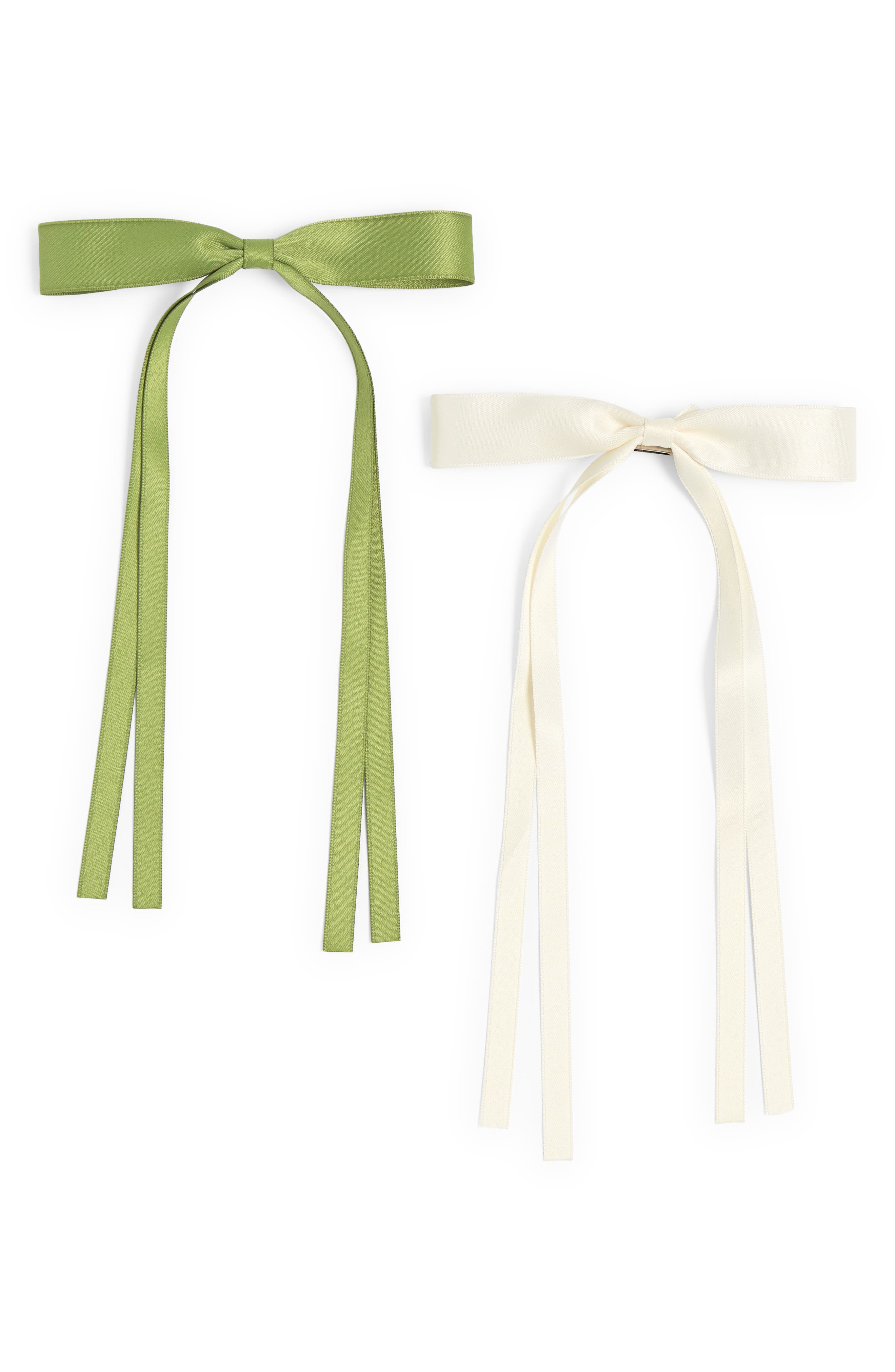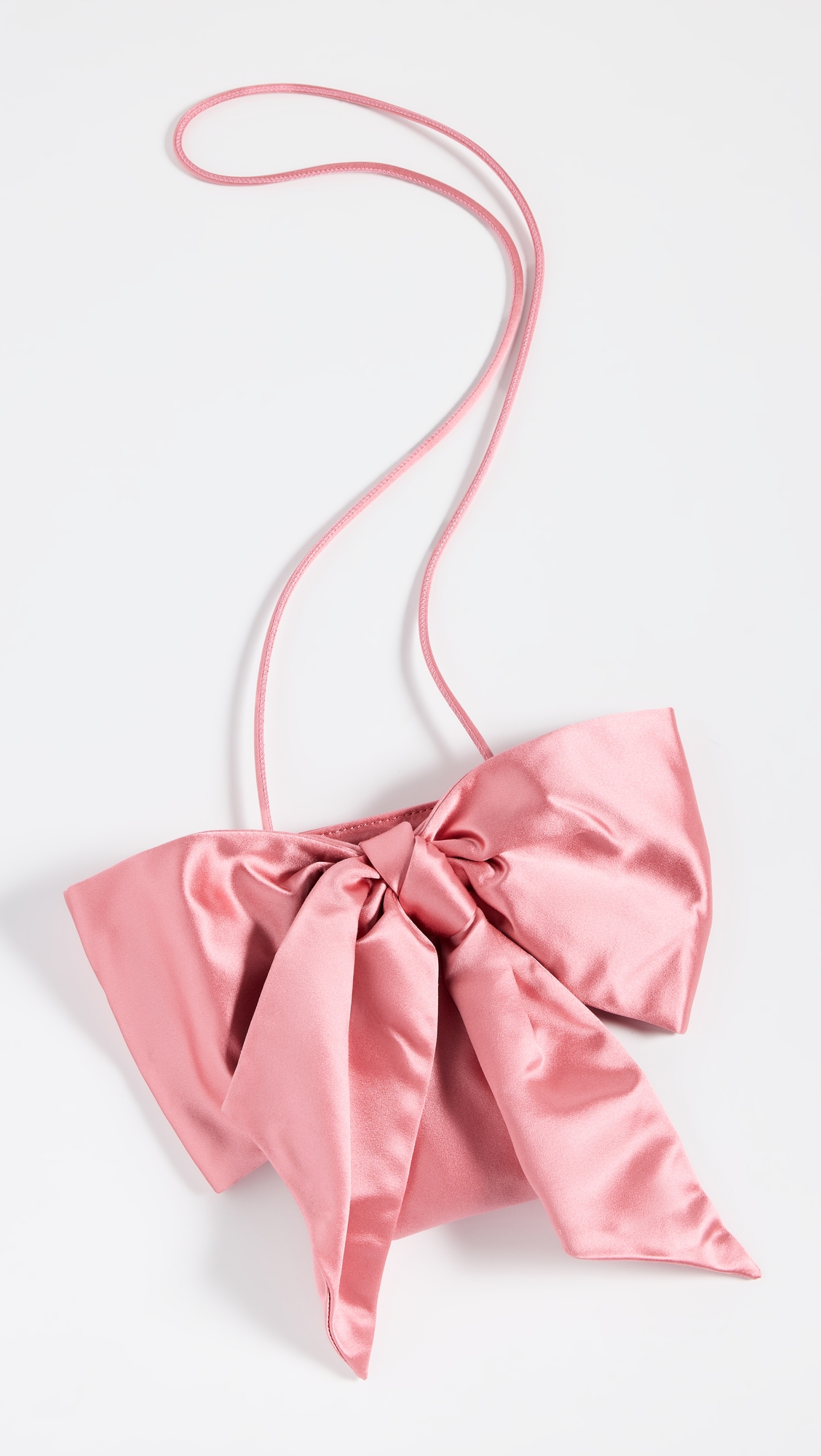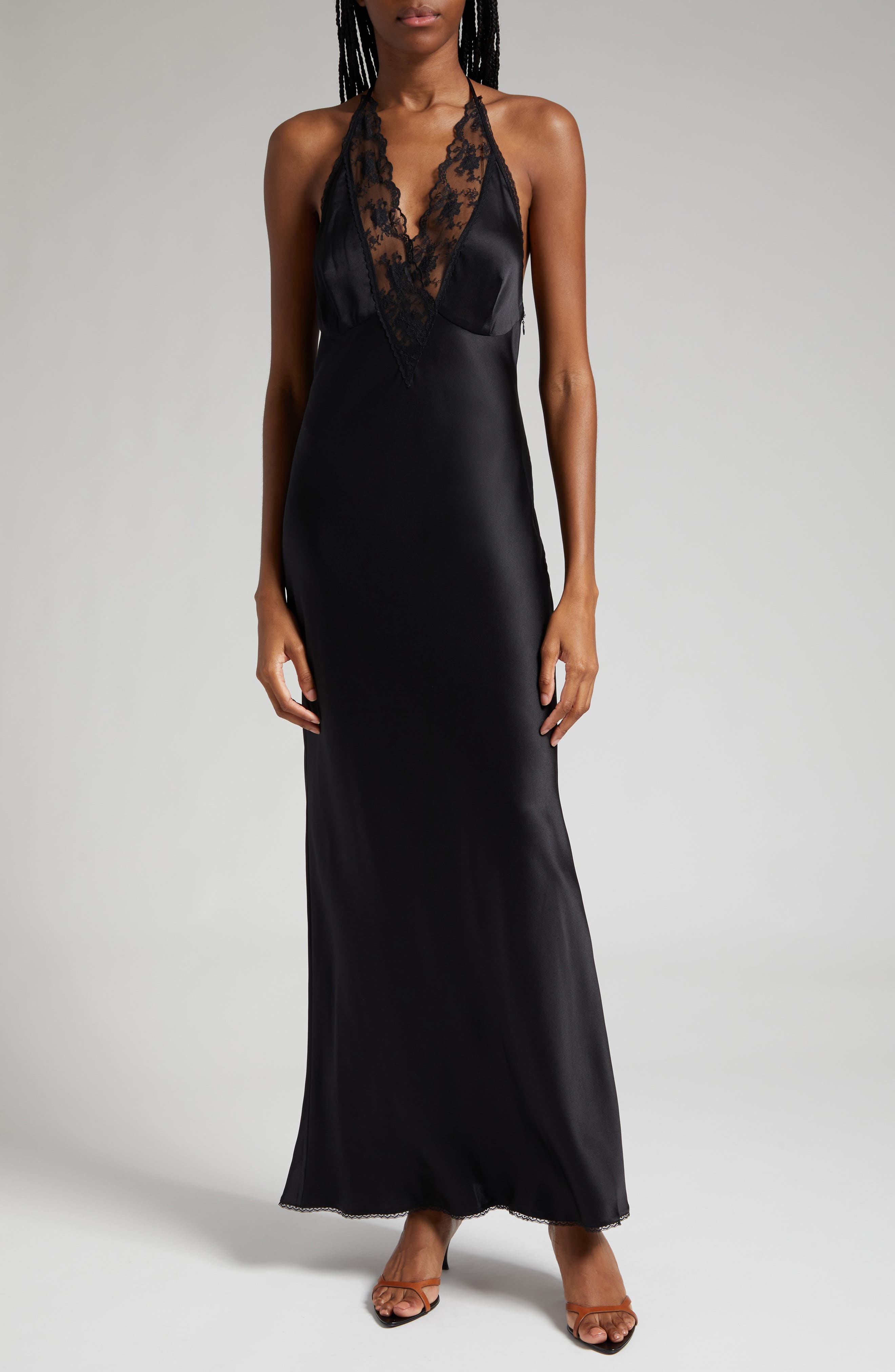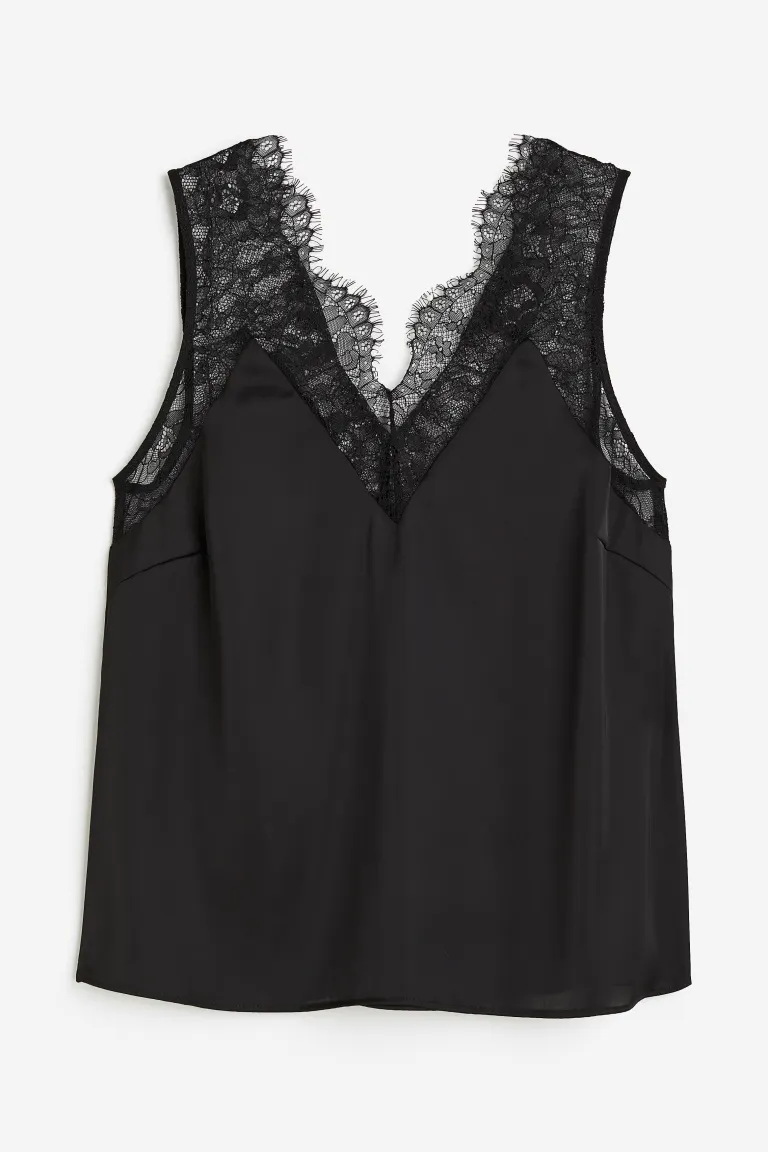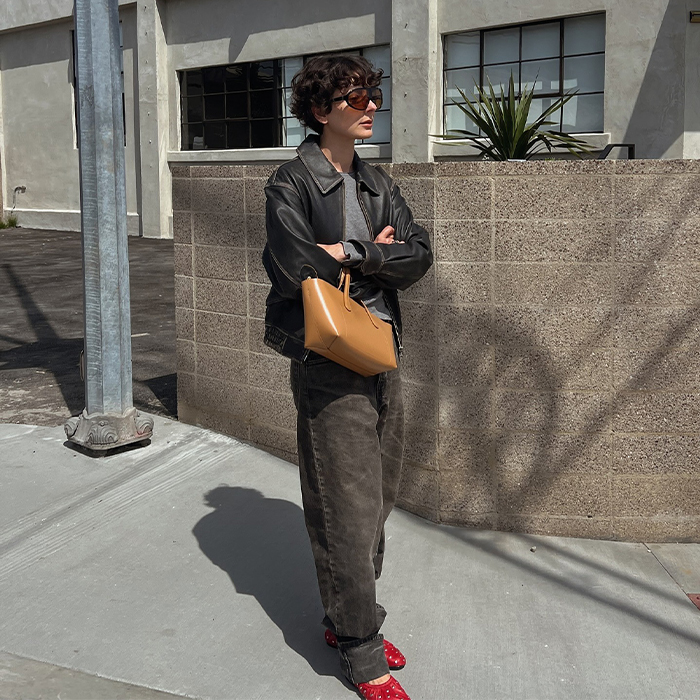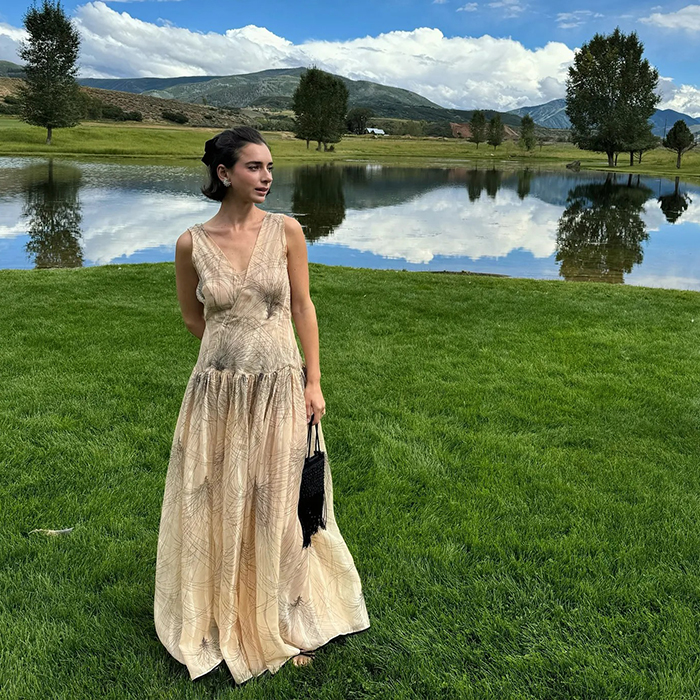How Celebrating Girlhood Quickly Became the Internet's Favorite Trend
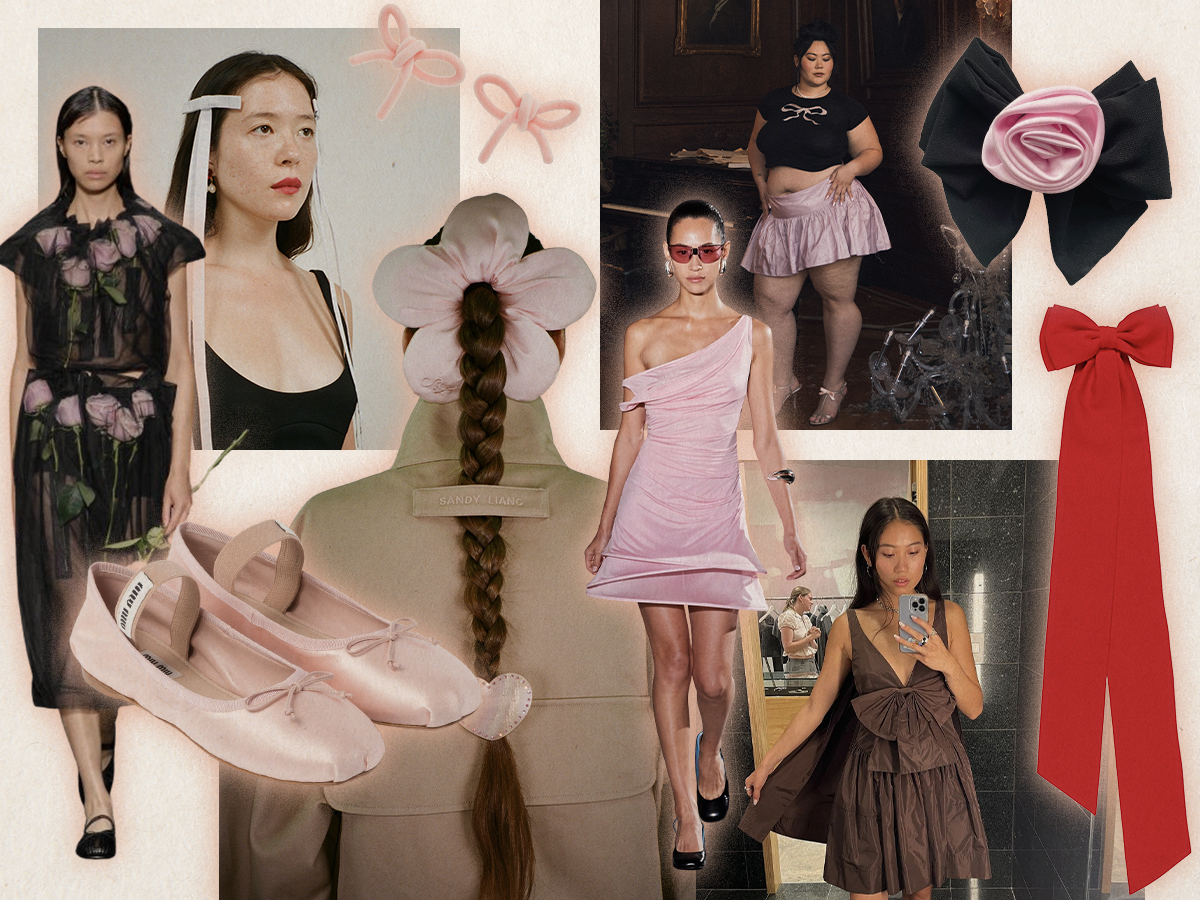
Gen Z Says is a bimonthly column chronicling the latest trends in the fashion and beauty space through the lens of Who What Wear’s own Gen-Z editors. Expect a download on the upcoming class of tastemakers, emerging designers, and shopping and style choices straight from the generation setting the trends.
If there were a way to monitor the buzzy cycle of internet lingo that comes out of social media, a TikTok wrapped, if you will, the number one spot for 2023 would probably go to the use of "girl vocabulary.” Between "girl dinner,” "hot girl walks,” and "girl math,” we’ve created a phenomenon out of the little ways women label parts of their lives. Amid it all, more people are voicing their desire to simply be "just a girl,” whether that means declining the hustle culture society has succumbed to in the past, mindlessly watching teenagers fall in love in The Summer I Turned Pretty, or adding themselves to the waiting list for the next Sandy Liang x Baggu drop.
The comfort one finds in nostalgia is nothing new, but there’s an obvious story beneath the surface of the ribbons, lace, Mary Janes, and pale-pink hues that have been trending alongside these videos all year, and it points to the larger role that childhood is playing in Gen Z’s burgeoning adulthood.
As is the case with most Gen Z–led trends, critics aren’t taking the movement so lightheartedly. Some find themselves fatigued by social media’s constant churning of girl-coded micro-trends. In an article critiquing the repackaging of womanhood, Rebecca Jennings, senior correspondent at Vox, reassures readers that they’d "be forgiven for thinking these terms are at best silly and meaningless, and at worst obnoxious and insidious.” Jennings argues that when one of these terms goes viral on TikTok, it operates more like a marketing campaign profiting off relatability than an actual trend. Of course, when brands are taking it upon themselves to add a bow to any product and then upcharge it (The Cut calls it the "bow tax”), that point stands.
These products and viral videos aren’t going to outright acknowledge or change the issues women are grappling with. However, Dawnn Karen, fashion psychologist and professor at FIT, thinks that regardless of the marketing ploys, the deeper meaning of the collective psyche still matters. "Underneath it all, what’s happening at the psychological level is true. Brands are always going to use what consumers are feeling to their advantage, but unconsciously, people are reverting to this feeling for a reason, and that reason is to feel a sense of control and seek out comfort,” she says.

We would be remiss to say there are questions about the trend that aren’t worth contemplating. By wanting to be girls more than women, are we neglecting our adult accountabilities and accepting the infantilization the patriarchy places on us? Are we ignoring larger issues at play and living in a state of ignorant bliss? Or have we earned the right to hold our girlhood close, a valid response to the all-too-common narrative of being written off as we grow older? As Robin Wasserman sums it up in her essay "What Do We Mean When We Call Women Girls?”, "To be called ‘just a girl’ may be diminishment, but to call yourself ‘still a girl,’ can be empowerment, laying claim to the unencumbered liberties of youth.”
Being "still a girl” is a relief for anyone who felt a flip switch around the time they entered middle school. Many of us who grew up indulging in stereotypically "girly” activities experience sudden loss as all the things we once took comfort in become "uncool.” Because we abandoned much of the things we loved as girls in hopes of being perceived as "edgy” and interesting, we’re now grieving our childhoods and admitting we want aspects of our youth back. There is a sense of making up for lost time when we, as women, reconnect with who we were when we were younger.
Karen admits that at its core and with extremities aside, this kind of nostalgia is a healthy form of escapism. "I’d rather people do this [celebrate girlhood] than mourn the childhood they didn’t have and fall into destructive behaviors and fill themselves with self-hatred.” And despite being a psychologist herself, she even tells her therapist how she’s recently had a thing for Barbies because she was forced to grow up rapidly and is now attempting to re-create moments of childhood she didn’t have. "When you boil it down, it’s simple: It’s women saying ‘I missed out on this, or I miss this, and this is how I’m going to remedy the situation,’” she explains. In that sense, there’s a lot of agency in proclaiming you’re "still a girl.”
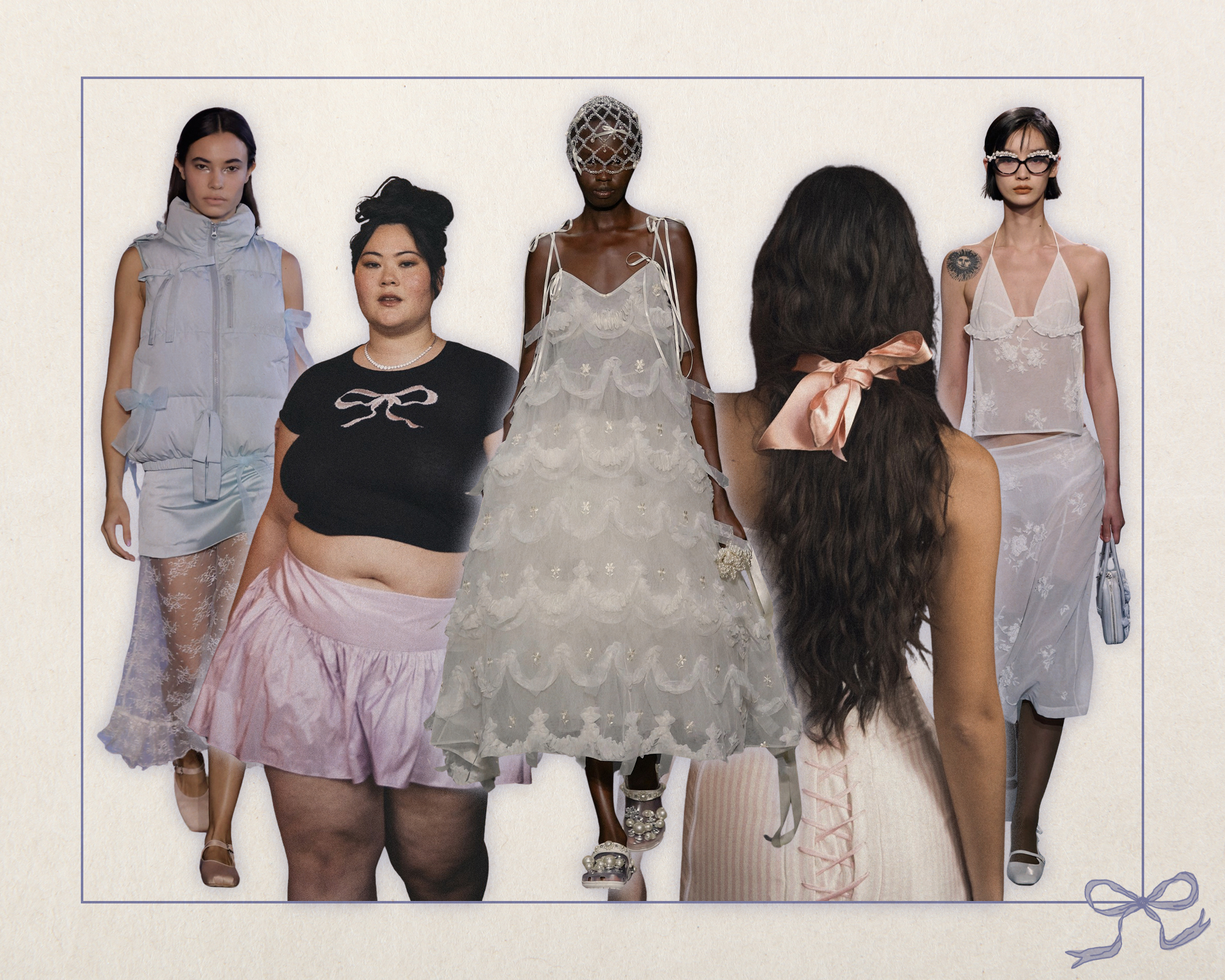
While 2023 was the year of girly aesthetic, it’s a stark contrast to the work-focused "girlboss” era of the 2010s. After that was somewhat dismantled, it’s comforting to return to our most innate sensibilities. Heavily associated with Sophia Amoruso’s best-selling book, the phenomenon had a solid run before becoming a symbol of facetious female empowerment. It seemed to uplift some women over others, as if being strictly a career woman was the only way to be a woman. It lacked intersectionality and created pressure around "building an empire,” a phrase thrown onto innumerable mugs, T-shirts, and spiral-bound planners over the years that girlbosses reigned supreme.
In reality, not every woman has the same level of access to the resources it takes to start a successful business. Nor is it empowering to believe that we must put work and finances at the forefront of our lives to gain the respect of our male counterparts. It’s no secret that this era was ignorant of mental health, either. Karen recalls her own time feeding into being a girlboss and how the gist was essentially "Team No Sleep. Keep grinding no matter what. Did you eat on time? Oh, no? Tired? Doesn’t matter, keep going! It was so mentally and physically taxing that it makes sense why we wouldn’t want to do that again. Many people were either forced to or made themselves grow up too fast, and now, they want to embrace their girlhood and the softness in them rather than shutting it away,” she explains.

That era may have been marketed for girls, but Karen believes that it had men so deeply tied into the equation, trying to mimic toxic masculinity and constantly comparing ourselves to them even though it never took into account the deep-rooted feelings that women regularly experience. "Eventually, it was surpassing being a boss. It wasn’t even giving ‘You are human.’ It was giving ‘Work till you’re dead.’ It was asking women to be robotic and AI-like.”
Being girls sans "boss,” however, allows us to tune into who we were as kids. We often lose touch with our inner child sooner than men, usually upon our teens. We participate in subcultures as a means of self-exploration. Whether you were a skate-park dweller who took comfort in baggy streetwear or loved dresses, these phases are valuable steps to finding ourselves. We become well-rounded adults by looking at our younger selves as people to learn from—no matter how "cringe” some of our attempts at being cool may have been. The algorithm continues to push content for "teenage girls in their 20s,” and Karen raises the question, "Isn’t it better if these women are realizing this now, in their 20s, [rather] than when they’re 50 or 70 years old?” Experimentation gives us the chance to combine copious influences and create themes in our wardrobes, bringing many of us full circle, back to the little girls we once were.
This seemingly frivolous vocabulary isn’t so frivolous after all. Working with students at FIT, Karen has realized that there will always be ageism and we should accept that younger generations are always on a different timeline, and before we know it, what Gen Z is saying will be taken a bit more seriously within the consensus. By taking a closer look underneath the surface of the aesthetic, we’re able to gain insight into the complexities that come with growing up in an unpredictable environment.
Vanity Fair claims we’ve reached peak "girl,” but we, and Karen, seem to agree that this trend has longevity. It may not look the same and may take on different forms, but it’s going to last as long as we need it to. And if there is a new cycle, Karen thinks that it’ll continue to be a response to what we need as a collective. Regardless of whether we attach ourselves to girliness, the safety we’ve found in returning to our younger selves will remain.
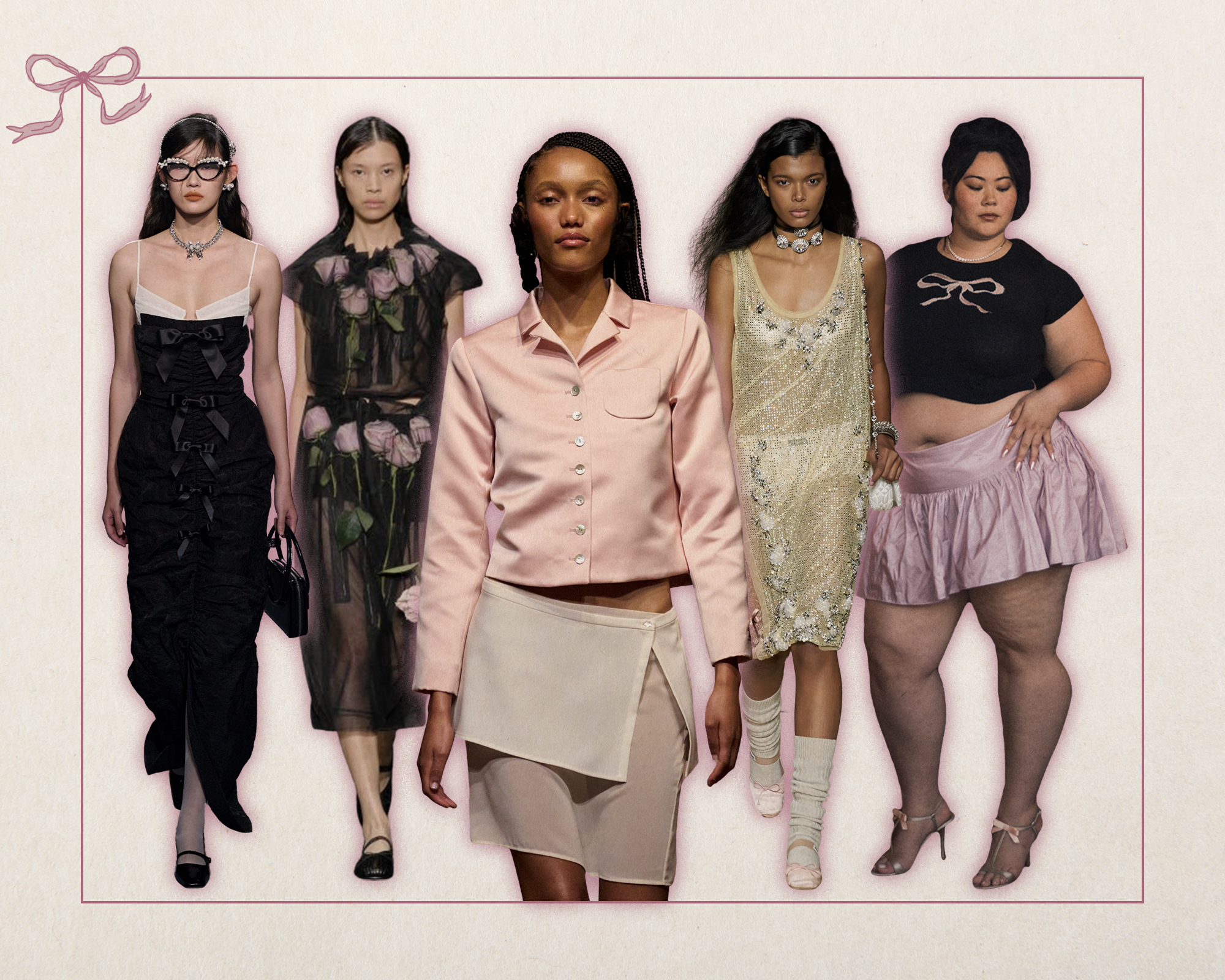
Twenty twenty-three’s undeniably girly fashion zeitgeist is a direct symptom, we’d argue, of this digital discourse. Enter the bow-embellished, ruched, ruffled, and lacy styles of brands such as Simone Rocha and ShuShu/Tong. And while many trends may gain popularity within niche fashion groups, this one’s also backed by widespread purchasing power. When Miu Miu rereleased its 2000s-era ballet flats in delicate satin, they were an instant hit (searches for them were up 75% between March and September). In Lyst’s Year in Fashion 2023 report, the younger sister to Prada took the Brand of the Year spot for the second year in a row, proving the strength trends like these have in the sartorial landscape.
While the aesthetic is reminiscent of one’s childhood, it also has been modernized by brands that mix current trends with whimsical and feminine details. Designers like Tory Burch and Balmain, who already have their own distinct identities, are still adding subtle nods to the trend within their recent collections. Among a sea of neutrals, Burch managed to fit a bubblegum-pink minidress seamlessly into her S/S 24 collection, which was promptly worn by Hailey Bieber. Olivier Rousteing filled Balmain’s runway with rose-buttoned corsets, layered miniskirts, and floral motifs mixed with his classic bold designs.
Nostalgia is a repetitive element entwined into fashion. In times of crisis, it makes sense for designers and consumers to both revert to what provides them comfort. As Sandy Liang told The New York Times backstage before her S/S 24 runway show, "I’m obsessing over something I can no longer return to.”
Below, we’ve narrowed down the standout pieces that have been defining this era of girlhood in fashion. You can choose to wear it all or extract an element that makes sense for your personal style. After all, it’s about reclaiming your childhood and femininity and reshaping it the way you see fit.
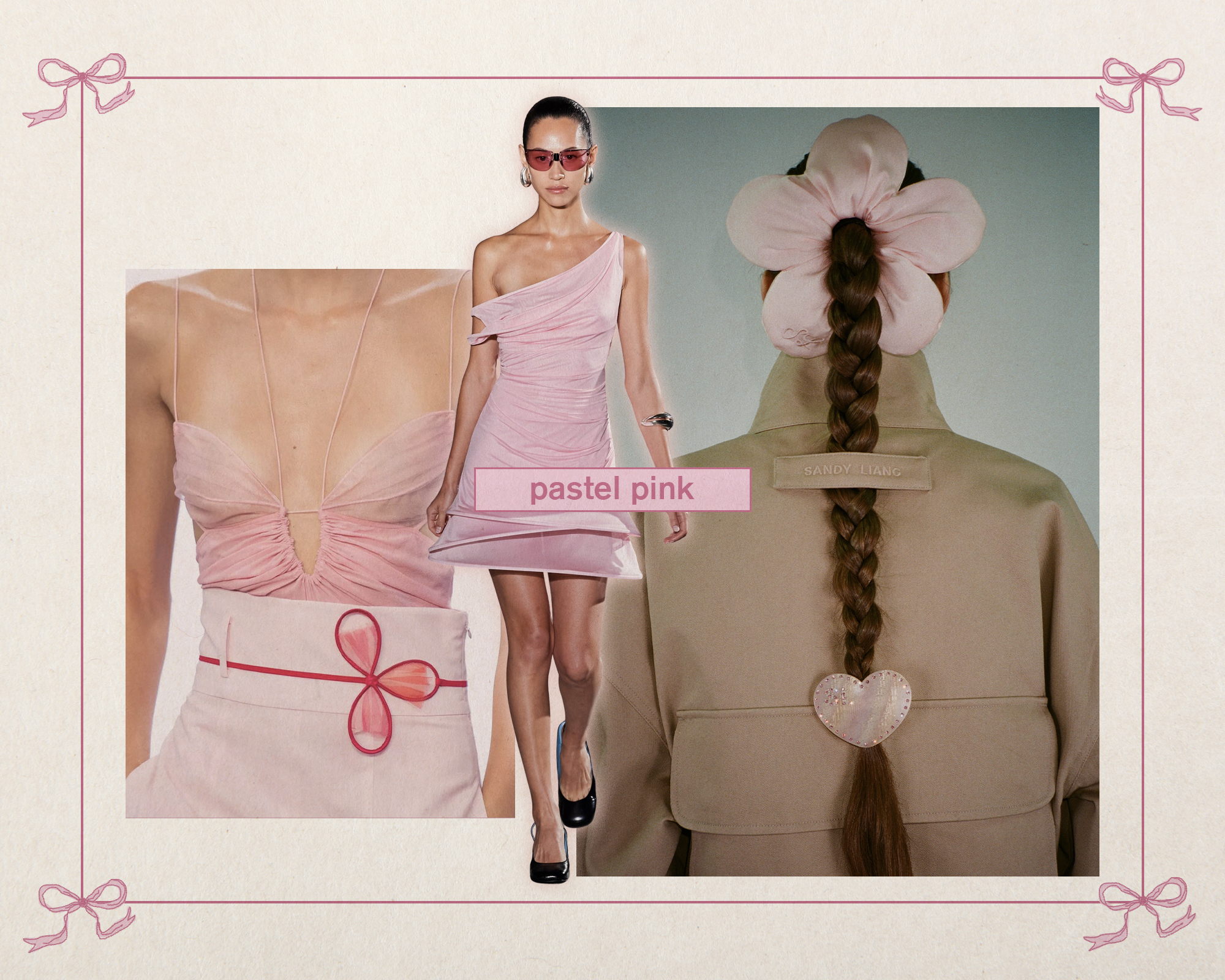
It might seem obvious, but pale pink is the color that’s dominating this trend, regardless of the craze that "Barbie pink” ensued this past year. The color trend was further solidified in our eyes when a designer like Tory Burch (whose aesthetic is more modernized in comparison to others we’ve mentioned) added the color to her S/S 24 collection.
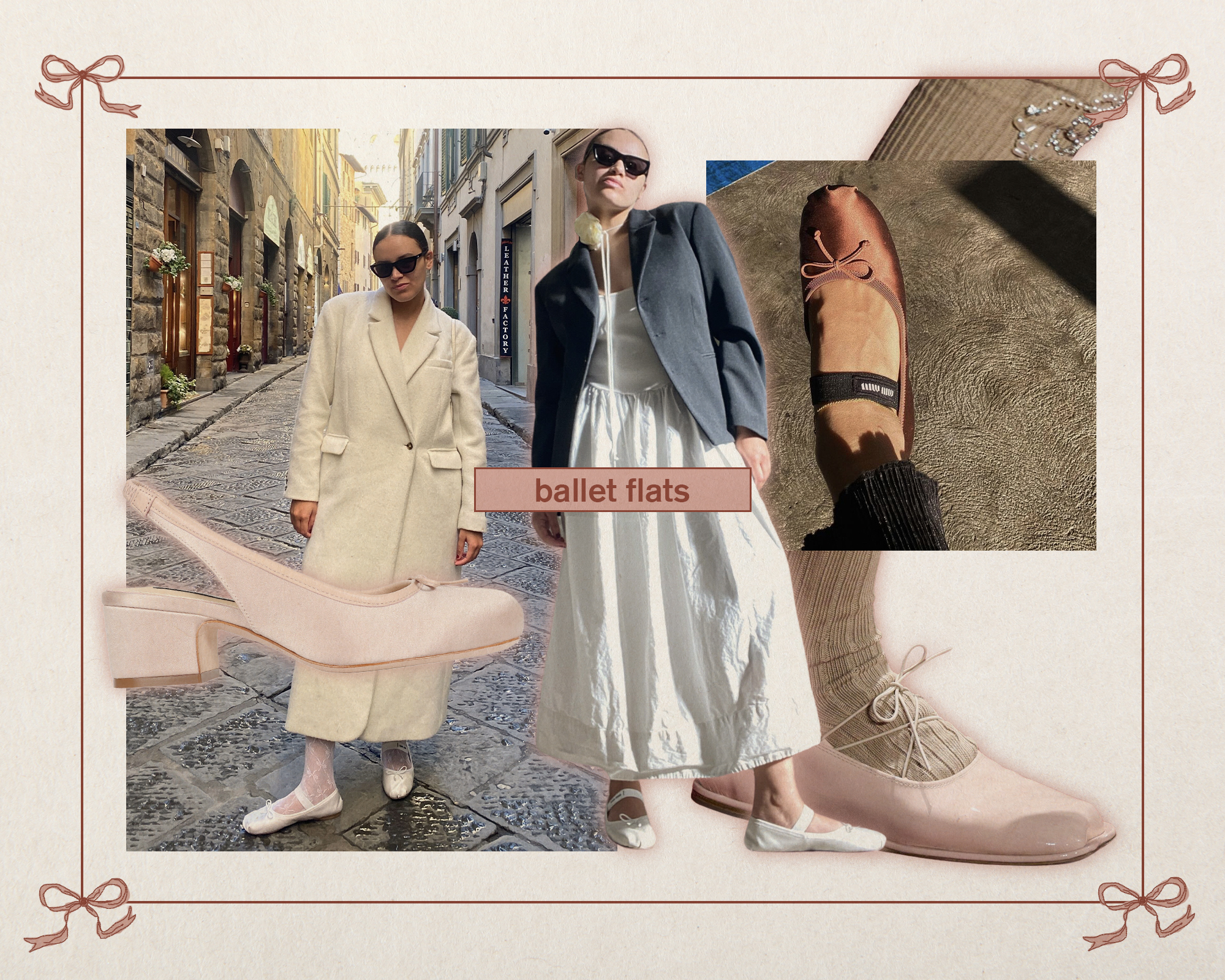
According to Data, But Make It Fashion, an Instagram page that discusses fashion trends through the lens of data analytics, the popularity of the term "balletcore” increased by 55% this year. We don’t expect the fashion set’s love for the shoes to go away anytime soon, especially since Sandy Liang just released a high-heeled version that’s close to selling out.
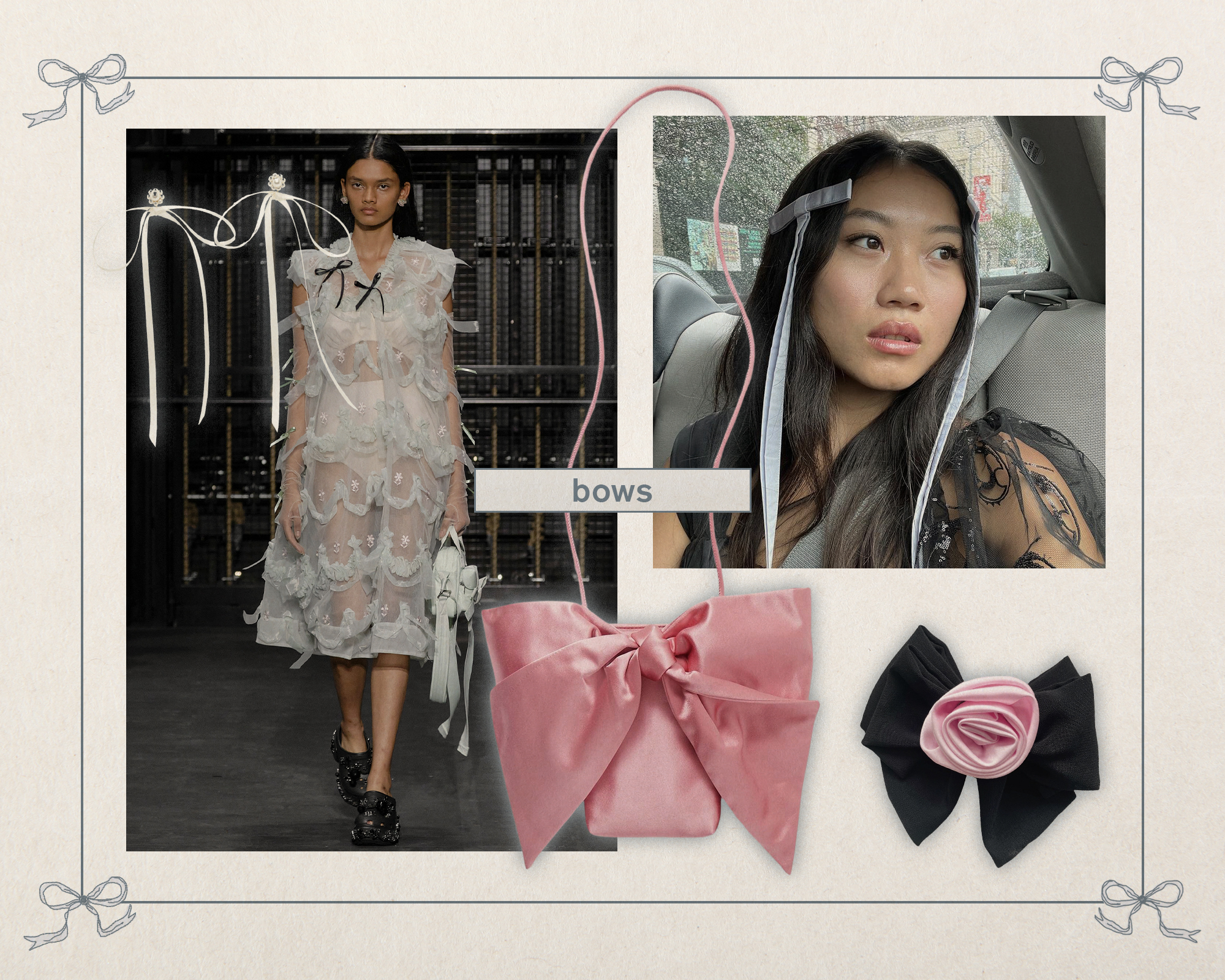
If you’re deep in the TikTok trenches, you might have noticed that everyone is adding a bow to everything—shoes, handbags, and more. Simone Rocha and Sandy Liang even incorporated them into beauty, with bows replacing eyeliner and tiny bows adorned across the hair for the respective runway shows. You can adorn your wardrobe items with a simple coquette-esque bow yourself, or purchase a pre-bowed item below.
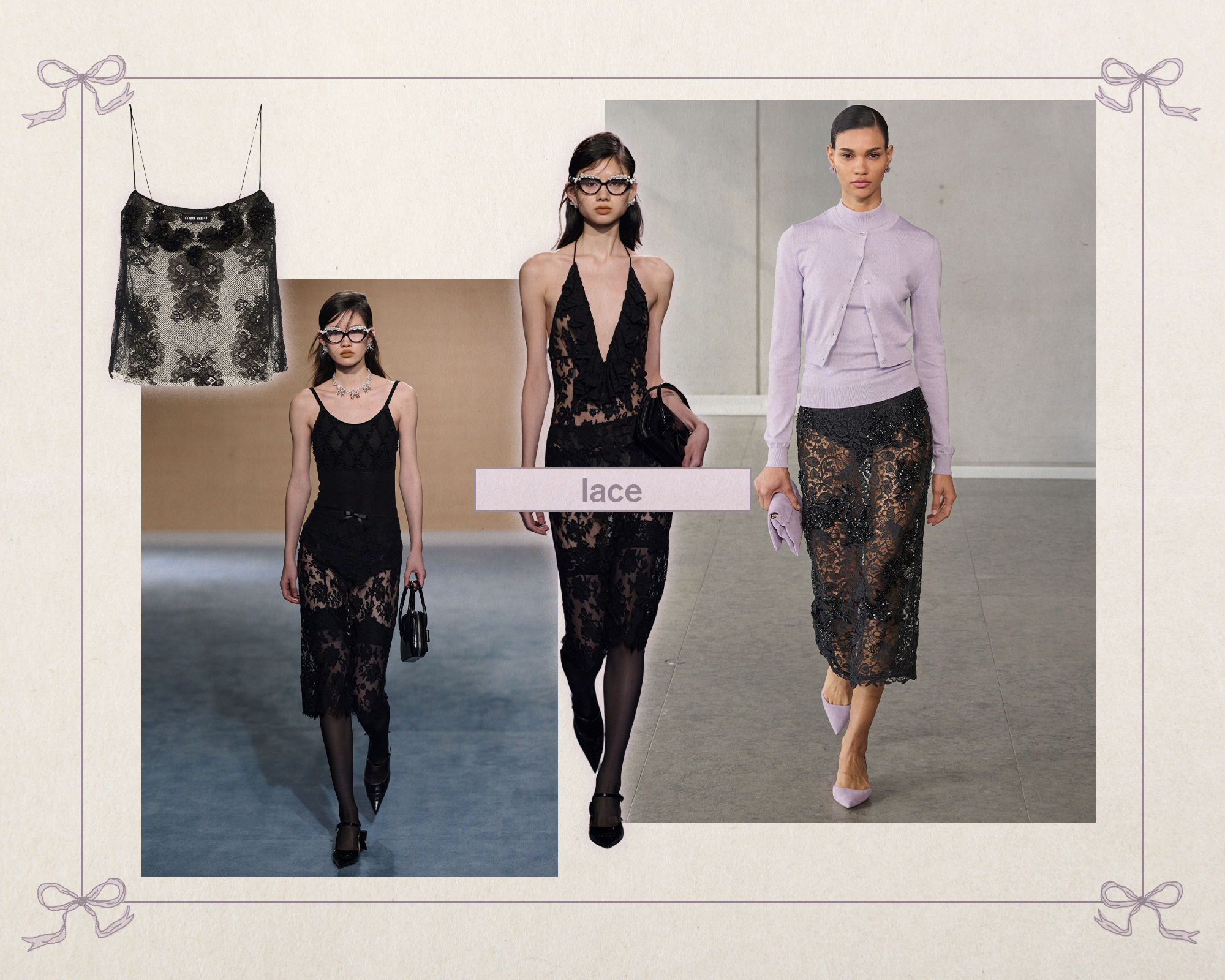
In the ready-to-wear space, lace can often head into the "tacky” territory rather than feel romantic. Many labels like Saint Laurent and Khaite have reclaimed the fabric, leaning into designs that feel more refined and elevated.
-
 Jamie Mizrahi's World: The Celeb Stylist's Favorite Red Carpet Look, Most Worth-It Shoe, and Album She Listens to on Repeat
Jamie Mizrahi's World: The Celeb Stylist's Favorite Red Carpet Look, Most Worth-It Shoe, and Album She Listens to on RepeatA modern-day style expert.
By Allyson Payer
-
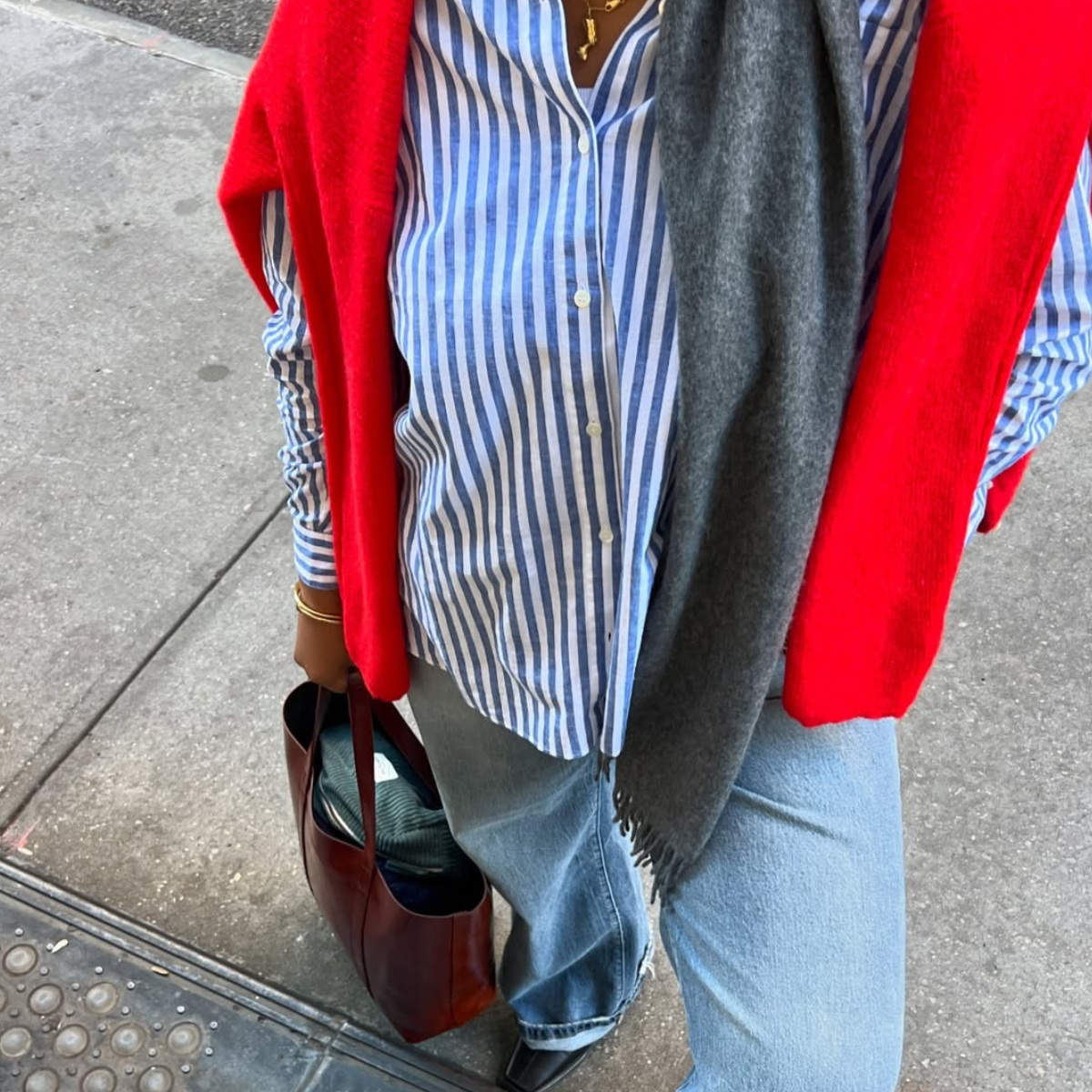 How Everyone Will Be Wearing Their Non–Skinny Jeans This Spring
How Everyone Will Be Wearing Their Non–Skinny Jeans This SpringHere's your outfit inspiration.
By Michelle Scanga
-
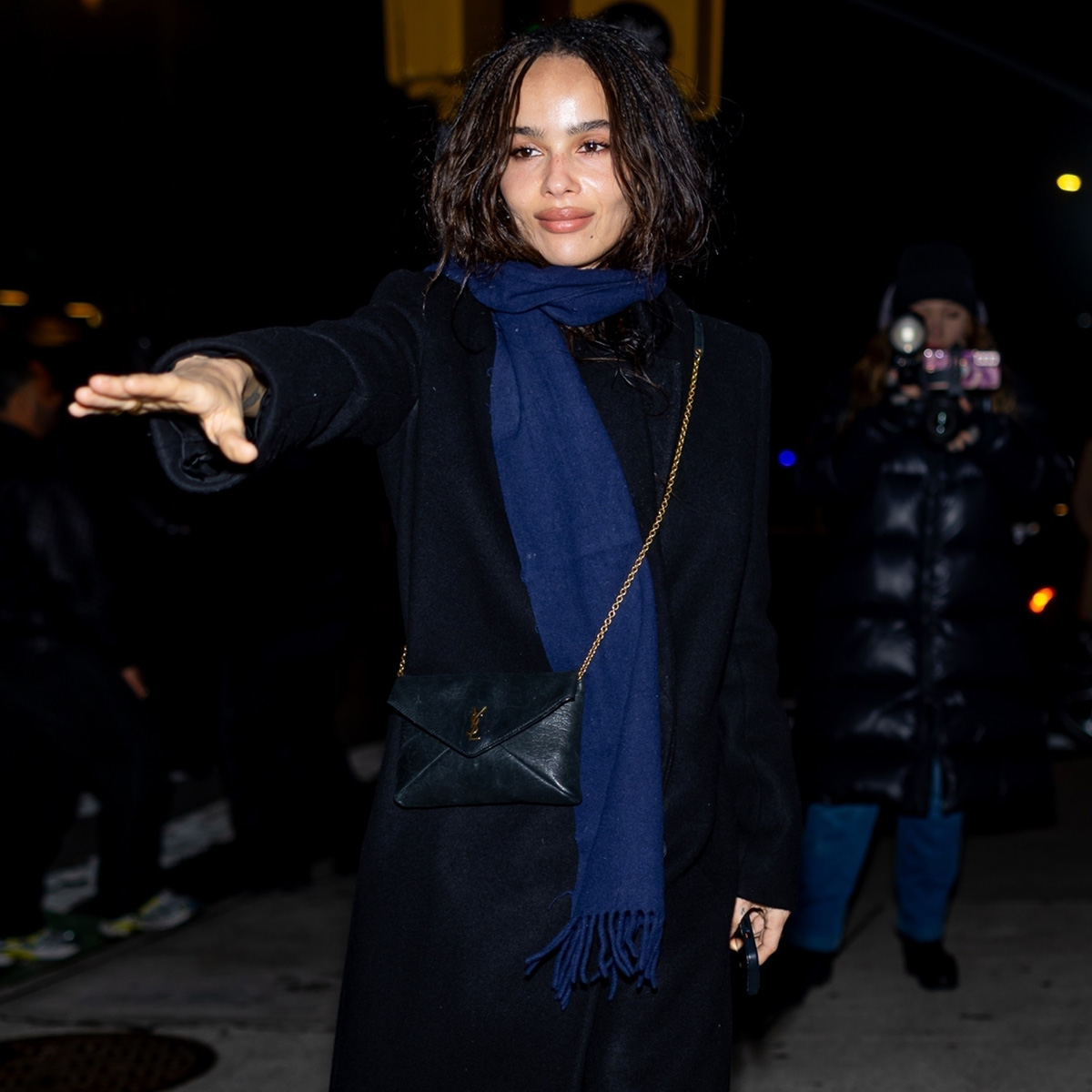 Suddenly, Women With The Row Style Are Breaking This Fashion Rule
Suddenly, Women With The Row Style Are Breaking This Fashion RuleYou should too.
By Nikki Chwatt
-
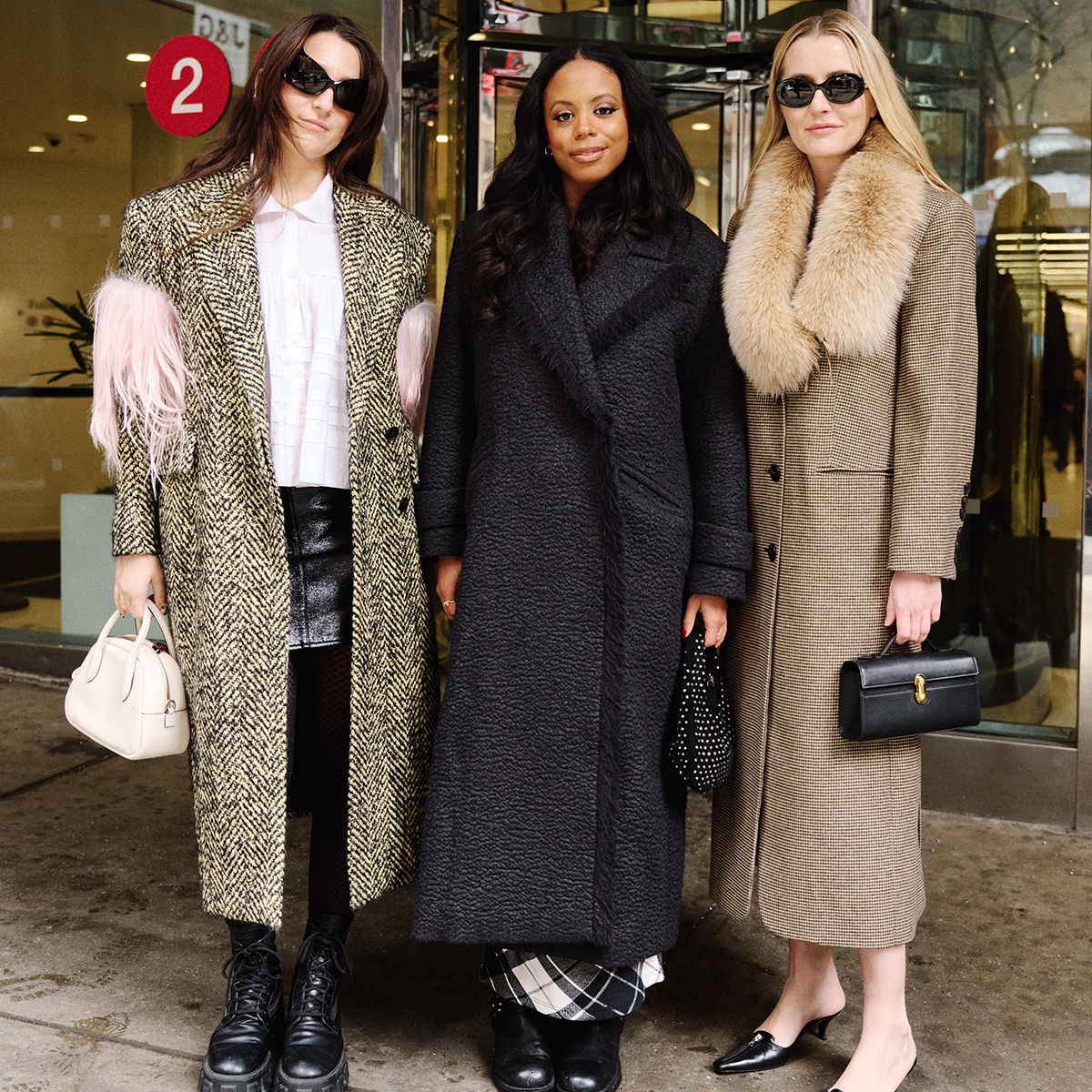 We're Fashion Editors—Everything We Saw, Wore, Did, and Ate During NYFW
We're Fashion Editors—Everything We Saw, Wore, Did, and Ate During NYFWLet's dive in.
By Anna LaPlaca
-
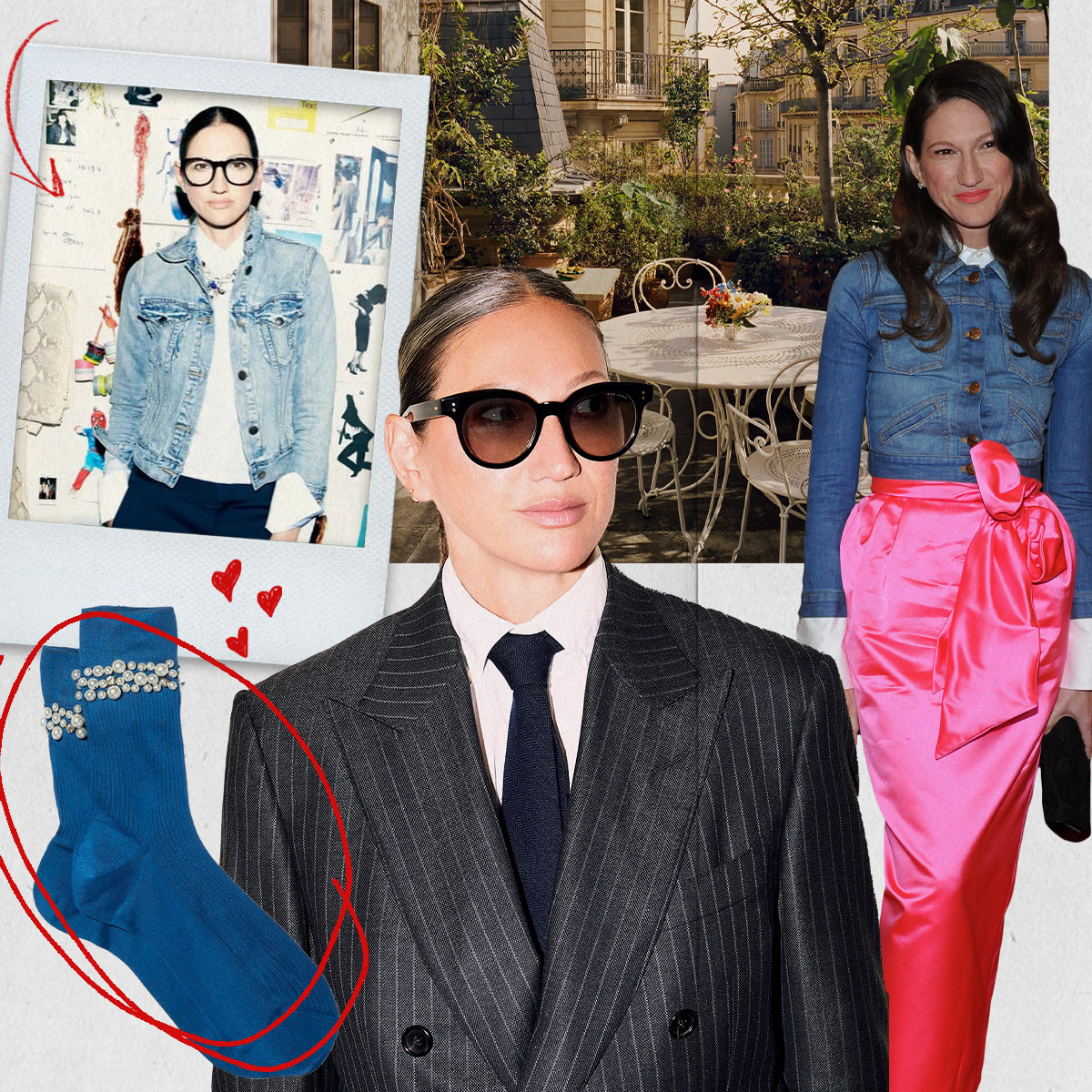 Jenna Lyons's World: Her Go-To Red Lipstick, Her Latest Eyewear Collab, and the J.Crew Pieces She Still Wears Today
Jenna Lyons's World: Her Go-To Red Lipstick, Her Latest Eyewear Collab, and the J.Crew Pieces She Still Wears TodayA true fashion icon.
By Judith Jones
-
 Not Into Trends? Renée Zellweger's Winter Outfit Combo Is 100% Classic
Not Into Trends? Renée Zellweger's Winter Outfit Combo Is 100% ClassicJust as you are.
By Drew Elovitz
-
 Emma Chamberlain's World: Her Warby Parker Collab, Two-Phone Rule, and Spiciest Fashion Takes
Emma Chamberlain's World: Her Warby Parker Collab, Two-Phone Rule, and Spiciest Fashion Takes"I just want to bring the most joy to people."
By Anna LaPlaca
-
 4 Anti-Trend Outfits I Spot Every Time I'm in Europe
4 Anti-Trend Outfits I Spot Every Time I'm in EuropeClassic looks that are always in style.
By Natalie Cantell
